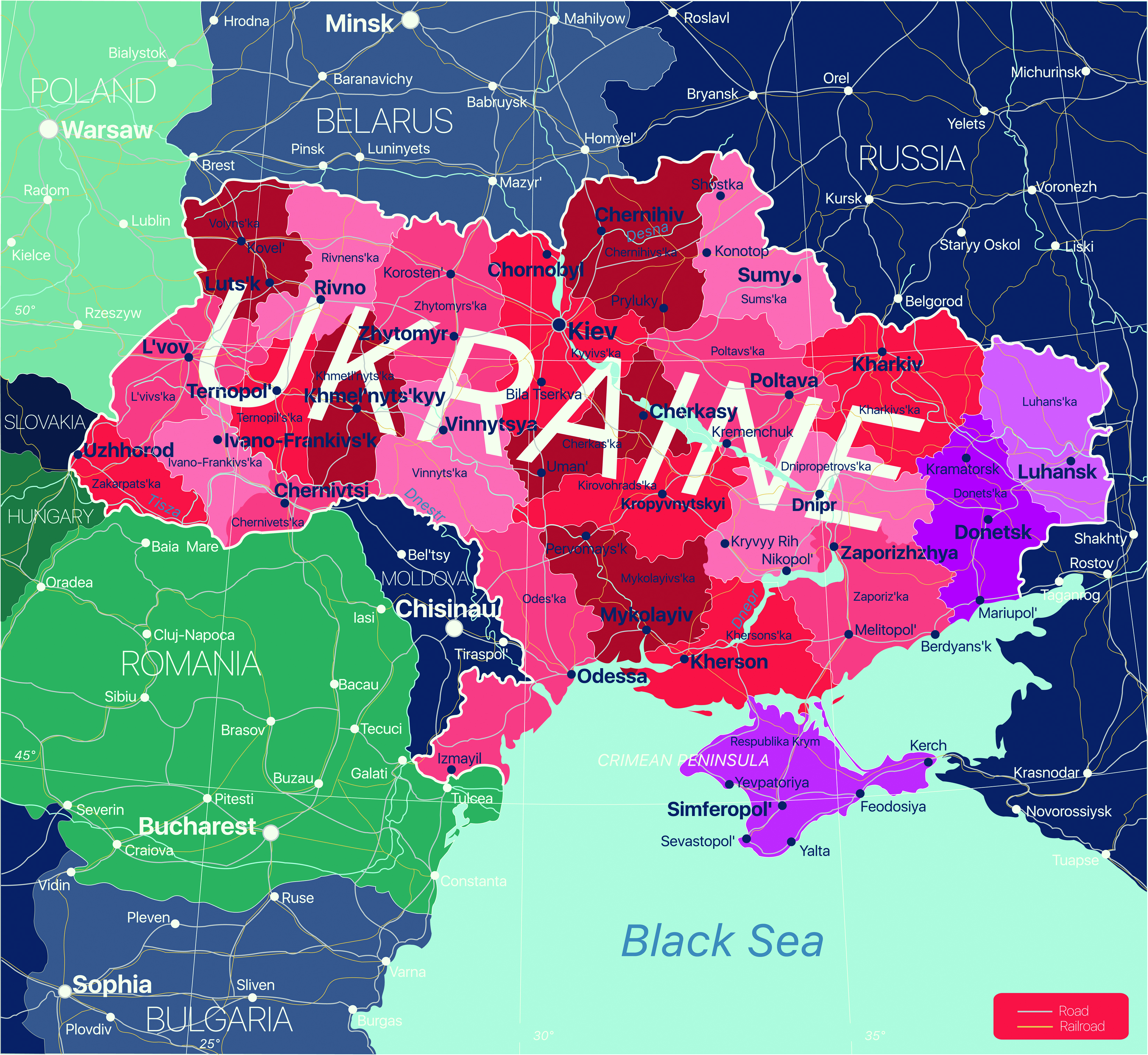With the Ukraine war raging, President Joe Biden did not mention in his first State of the Union Address that the United States is purchasing Russian oil (670,000 barrels/day), nor that he intends to stop it. He also did not mention he would be reviewing his stance regarding easing restrictions on domestic production or pipeline operations and construction.
Public and political pressure are increasing as the price at the pump keeps increasing and may force the administration to take positive actions to incentivize domestic production and pipeline operations. If so, our industry will benefit greatly as the energy sector expands.
At the time of this writing, WTI is at $115/barrel, Brent is at $118.04/barrel and natural gas is at $4.917/MBTU. Predicated on the fallout from the Russia-Ukraine conflict, Rystad Energy’s simulations show oil prices could surge to around $130/barrel “with consumers feeling the squeeze at the gas pump and in their power bill.”
Rystad expects Russian oil exports to plunge by 1 million barrels a day from the indirect impact of sanctions and voluntary actions by companies. CEO Jarand Rystad noted that Saudi Arabia and the UAE have spare capacity but may not take immediate action, while U.S. production levels will only manage to respond meaningfully toward the end of the year due to current administration constraints.
“The net impact is that oil prices are likely to continue to rise — potentially beyond $130 a barrel,” Rystad says.
The Federal Energy Regulatory Commission’s (FERC) mandate calls on pipeline developers to assess their future emissions as well as means to control them, possibly by incorporating carbon sequestration technology into their plans.
However, FERC Commissioner Mark Christie, a Trump appointee, says the policy decision is emblematic of what he said was a history of misguided acts from the Biden administration.
“This new policy — confusing as it is — applies right now, not only to new applications, but to all pending applications, and will inflict material harm on all pending right now,” he explains. “Changing the rules in the middle of the game violates any serious principle of due process, regulatory certainty and just basic fairness.”
There are few ways, apart from the liquefaction of natural gas, to move large volumes of fossil fuels other than by pipeline. Additions will be required given the forecasts for domestic production.
The U.S. Energy Department estimates crude oil production will average 12.6 million barrels a day (BBL/d) in 2023, exceeding the record set in 2019 at 12.3 million BBL/d. Natural gas production in 2023 could reach 9.8 billion cubic feet per day (Bcf/d), beating this year’s expected 96.1 Bcf/d.
In June 2020, during the Trump administration, the U.S. Department of Transportation’s Pipeline and Hazardous Materials Safety Administration (PHMSA), in coordination with the Federal Railroad Administration, published final rules to allow liquified natural gas (LNG) to be safely transported via special rail cars.
During his first two days in office, President Biden put a freeze on LNG-by-rail, succumbing to fossil-fuel haters. Now this faction is moving for the PHMSA to block LNG-by-rail permanently.
However, 25 states joined the fight to block the Biden administration’s proposed ban.
Bechtel will begin full construction this month on an estimated $25 billion Driftwood LNG complex in Louisiana under a $15.5 billion fixed-price contract. The project will move forward without an official final investment decision while it completes finance negotiations. The project, if built to plan, will include five liquefaction trains, three LNG storage tanks, a marine terminal and a 96-mile pipeline with about 6,500 construction workers at peak.
Continental Resources expects to raise capital expenditures (capex) by 47 percent in 2022 and oil production by about 25 percent. Continental is projecting a $2.3 billion capex budget; about $1.8 billion is allocated to drilling and completion activities and an additional $500 million allocated primarily for leasehold, mineral acquisitions, workovers and facilities.
Continental expects annual crude oil production of 195,000 BBL/d to 205,000 BBL/d, and natural gas production to be 1,040 million cf/d to 1,140 million cf/d in 2022.
Steel Production and Russia
The United States imported 1.5 million tons of Russian steel slab during 2021 for hot-rolled coil (HRC). Now, the Russian sanctions will cut off the flow of slab. This will affect domestic rerollers, including NLMK USA, located in Farrell, Pa., which imports the most Russian slab.
Should this conflict continue for some length of time or escalate, the supply chain for supplies of steel and steel-related products such as carbon-steel pipe, carbon-steel butt-welding fittings and forged-steel flanges will be strained. Supplies will become limited, lead times longer and production more expensive.
Nucor Corp. is countering the need for imports by constructing a $2.7 billion steel mill in Apple Grove, W. Va. The project is scheduled to start in August. When completed, the 3 million tons/year mill will have a product mix including 750,000 tons per year of HRC.
The Russian-Ukraine war has exacerbated the supply chain problems. Port-of-entry constraints, higher fuel costs, higher gas and electricity costs, skilled worker shortages, cancellation or delays of offshore products, rising container costs and government restrictions continue to fuel the supply chain dilemma.
Why Ukraine matters:
10th in the world in terms of titanium ore reserves;
2nd in the world’s iron ore reserves (30 billion tons);
2nd place in the world for explored manganese ore (2.3 billion tons), 12 percent of the world’s reserves;
13th place in the world in shale gas reserves (22 trillion cubic meters);
10th-largest steel producer in the world (32.4 million tons).
Recent price increases on domestic carbon-steel butt-welding fittings and forged-steel flanges reflect the rising cost of production. In addition, a major country that exports to the United States has curtailed shipping due to unstable world conditions.
To avoid stock outages, unexpected delays in shipping, cancellation of orders, along with anticipated price increases going forward, regular communication with your manufacturer/supplier is a must.
With this said, supporting domestic manufacturing will ensure a reliable source of supply, high-quality products, limited liability exposure in addition to bolstering our domestic PVF industry’s manufacturing sector.
PVF Roundtable News
The second PVF Roundtable Networking Meeting of 2022 will be held June 14 at Houston’s The Bell Tower on 34th.
The PVF Young Professionals group hosted the 2022 PVFYP Sporting Clays Classic March 3 at the Greater Houston Sports and Gun Club. Proceeds from this event will help fund the PVF Roundtable’s mission of giving scholarship monies to students focused on careers in the PVF industry.
The PVF Roundtable Don Caffe Memorial Golf Tournament will be held June 13 at The Clubs of Kingwood Golf Course in Kingwood, Texas. Another record turnout is expected, so sign up early. The tournament will precede the Networking Meeting scheduled for June 14.
The golf tournament and TroutBlast are the two major fund-raising events held by the PVF Roundtable Charitable Foundation, with funds raised dedicated to the PVF Roundtable Scholarship Programs.
As a member of the board, and I speak for all members, we thank you for your participation in these events.
The Networking Meetings are a unique venue for you and your associates to network with your peers in the PVF industry. These events provide the platform to share information, discuss pertinent issues, meet new contacts, develop new and long-lasting friendships and pursue new opportunities in the industry.





